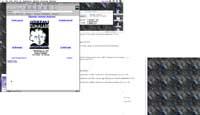Future wireless future
2000/12/01 Kortabarria Olabarria, Beñardo - Elhuyar Zientzia Iturria: Elhuyar aldizkaria
Invasion of mobile phones
The epidemic of mobile phones is multiplying, tripling, quadrupling the number of victims. Despite the fact that the explosion of the mobile phone became a common tool in the 1990s, with the passage of time the consequences of the explosion have not been calm. There are already more than 400 million mobile phones in the world and it does not seem that the market is saturated. On the contrary, the services they offer make the future look at wireless technologies in general and mobile phones in particular. All forecasts say the same: with the arrival of new technologies, the demand for mobile phones will accelerate.
The first generation of mobile phones came in the 80s, but it did not shake the market too much until in the 90s came the second generation, that of GSM phones. However, the real revolution is yet to come and will come with the acronym UMTS (Universal Mobile Telecommunications System). As is known, this type of phones will be able to surf the Internet at high speed, which is the most prominent difference that will have the current WAP and UMTS phones: speed. The telephones with WAP technology will work in an intermediate way, since the UMTS will have much more possibilities: they can fulfill the function of television, the video camera, the computer, the videoconference. However, these acronyms are the future, the present is WAP.
What is WAP?
WAP (Wireless Application Protocol) or Wireless Application Protocol, Internet and other networks in mobile phones, laptops and devices without network connection.
WAP phones are used as web browsers. The user must dial the URL (Uniform Resource Locator) or the connection number with the resource finder. Conventional browsers use the HTML language (Hyper Text Markup Language) to visualize the information of the Web, both texts and images, on the computer screen, while the WAP phones use the WML language, which adapts to small devices that should be used by hand. Therefore, the WML language allows texts on devices that are not connected to the network, especially on telephones Presentation of images and access to information.
WAP phones use the usual wireless connections so that the user requests what he needs to the WAP portal. This converts requests to the HTTP protocol (HyperText Transport Protocol) and sends them online. The HTTP protocol is a system used by the browser and server on the network to send information, a system of mutual understanding. If the server responds, the WAP portal sends information to the small screen of the WAP phone.
The core of the WAP system is the WAP portal or access. It can work as http-proxy, that is, giving Internet access to computers that are grouped on the same network simultaneously and from the same place. In addition to the HTML translation to WML, the demand for services can be broad: WAP phone database for information protection, fax services, mail services.
Like services, WAP phones can be very varied, but it is necessary that all phones have minimal characteristics:
- Three-line resolution screen and, at least, a 12-character fixed width space.
- Basis for entering the text. By pressing the numbers buttons on the WAP phones, text can also be entered.
- At least two devices for users: one to accept what was done or requested and another to see the options.
- Reversing device.
Are they similar but very similar?
We should answer that yes to the question, there are great similarities between the WAP system and the traditional Web system. In fact, the architecture of the WAP platform is influenced by the structure and design of the giant network. This is easily seen in the following two examples:
- Usual session on the web, HTML transaction:
- The user must open the browser and specify the URL.
- The browser reviews the URL and sends the HTTP request to the server.
- The server receives the message and sends the HTTP response to the browser.
- The browser returns and displays it to the user.
- Normal session in WAP:
-
The user requests URL through the WAP phone.
-
The WAP browser sends a request to the WAP portal containing the information requester's data and URL.
-
WAP access reads the request, converts it into HTTP and sends it to the server.
-
The server receives the message and sends the HTTP response to the browser.
-
WAP access receives response, converts it into WML language and sends it to the WAP phone.
-
The WAP phone returns it and shows it to the user.
The acronyms actually converted
As discussed at the beginning, phones with WAP technology are already on sale on the market. They are also seen here. The approach of the next generation mobile phones is even more daring. They will not be limited to mere voice or data transmission. The objective is to structure the entire network. From this network you can send all kinds of information: voice, images, video. In addition, they predict an incredible speed for the wireless technology of the future, greater than 2 Mbps for phones, although the standard speed would mean 384 Kbps (compare with the speed of 64Kbps offered by current RDSI lines). If the predictions are true, high-quality video conferencing can be carried out, surf the internet and access on-line services while on the phone. So the future of the mobile phone has a very different aspect to the current one. As the WAP advances, it will not be limited to making and receiving calls, but will become a multimedia agenda with multiple options. Internet -therefore mundo- is carried in the pocket.

Gai honi buruzko eduki gehiago
Elhuyarrek garatutako teknologia





